Advanced composites finally enter the building materials market
The American Composite Manufacturers Association show that areas like transportation, marine, aerospace, and institutional building readily embrace advanced composites for their high performance and strong cost-to-value ratio. Look at the walls, floors, and ceilings of planes, trains, and boats, and it’s easy to see how abundant composites are in these environments.
Advanced composites are prolific in other industries, but not in residential building

Whether this is because of its lightweight design, risk-averse aesthetics, fire resistance, or some other feature, it’s evident that advanced composites have established themselves in multiple industries adjacent to residential construction.
The Marine Industry
The marine industry started using composites in the 1940s for hulls. Before composites, most hulls and body parts were either metal or wood. Boats take a beating by design crashing over waves and spending most of their active time partially submerged in water, so it's not a wonder why this industry needed to find a stronger and better performing material.
The Auto Industry
In the 1950s, the automobile industry began to adopt composites into car bodies with a focus on higher-end sports cars while by the 1960s composites started to be used in heavy trucks for various components. Some of the more iconic composite panel cars included the Corvette where streamlined shapes and lightweight were thought to improve overall vehicle performance. With GM's Saturn model, the advertisements focused on the impact durability. Some may recall the commercials showing a shopping cart crashing into the side of a Saturn only to be bounced back and no damage to the car.
The Aerospace Industry
Aerospace started in earnest in the 1970s and the energy windmills discovered the advantages by the 1980s. It's scary to think about flying in a wood frame airplane and it's quaint to think of a wind turbine made from anything but advanced composites.
Commercial Construction Industry
Even after the 2016 success of The San Francisco Museum of Modern Arts which underwent major expansion and renovation, and reopened its doors in 2016 - the use of FRP composites in residential construction untapped. This renovated building featuring a 10-story rippled, undulated, and the curved facade is the largest architectural application of FRP composites in the US.
Why are advance composite materials missing in residential construction?
Inevitably, the average American spends more time at home than in planes, trains, and boats. Perhaps, now is the time for the housing industry to take advantage of composite materials reap the benefits of advanced materials like so many other industries have already done.

Advanced Composites in Infrastructure
Maybe it’s code and regulation driven, or the right advanced composite hasn’t been able to convince the notoriously risk-averse home builder to try something new and better. There has been some success, such as Schluter Systems for tile backing systems, fiberglass for tubs, showers, and doors, and perhaps Shark Bite and PEX in plumbing systems, but mostly the homes of today are made from wood, drywall, asphalt, brick, stone, vinyl, glass, and concrete.
Old Composite Technology Pitfalls
One of the issues with composites of the past has been they don’t look like the real thing or didn’t hold up to Mother Nature. In many consumer’s minds, they accept the aging of traditional materials like cedar, brick, stone, and concrete and often become fond of the silvering, blistering, and variety of other aging characteristics that give charm and character to a home.
New advances in composites technology arrive in construction
According to the National Institue of Standards & Technolgy (NIST) The American Society of Civil Engineers 2017 Infrastructure Report Card issued a D+ grade to U.S. infrastructure, stating that the U.S. would need to invest $2 trillion to raise our grade over four years, and calling for “new approaches, materials, and technologies to ensure our infrastructure is more resilient.”
Enter Arcitell with its first composite product line for residential construction: Qora Cladding. But looking good is only the beginning. To be fully adopted, there needs to be a reason beyond beauty - and that’s where intelligent product design comes into play.

Intelligent Performance Focused Design
Designs that address key performance areas or address installation issues can catch the attention of home builders who seek to simplify the building process and still deliver the quality consumers expect. Composite products offer an array of options for intelligent product design. By varying the recipe, designers can imbibe various levels of structural performance, an almost unlimited aesthetic range and different sets of high-performance features. In many cases, the product design is bound by commercial viability and cost is always a concern, but fortunately, the material can be engineered and manufactured for a vast amount of applications.
Timeless Aesthetics & Simplified Installation
It’s a new building material for a timeless look. With incredible advances in material science, Qora Cladding nails the aesthetic standard of traditional brick, stone, and cedar shake while the innovative design simplifies the installation process. This cladding product delivers high strength and lightweight panel that excels on multiple performance platforms including fire, impact and ultraviolet resistance. With beauty and simplification, builders and contractors can give homeowners the look they want with the same great performance and enjoy a faster and easier installation. With Qora Cladding, everyone wins. Find out more about Qora's exterior building cladding technology.
----------------
About The Author
For over 20 years, Ben has been engaged in the siding industry with a focus on commercializing new products and developing new markets. His experience includes Universal Forest Products, CertainTeed and LP Building Products where he was a key player in executing the growth strategy behind LP SmartSide. At Arcitell, he is commercializing a new technology into the North American market called Qora Cladding.

